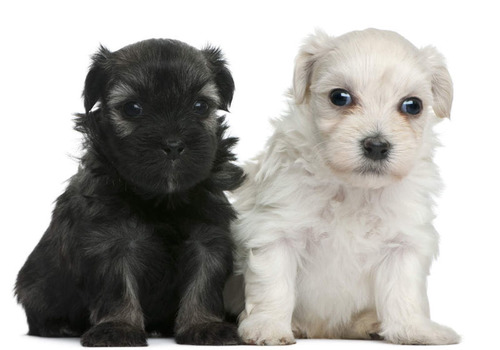The Löwchen’s grooming requirements are surprisingly few—a good brushing every few days, followed by a nice bath every couple of weeks will keep him looking and feeling his best.
Nails should be trimmed and ears cleaned regularly as well. The Löwchen can visit a professional groomer (or his breeder) every couple of months to keep the hair trimmed either into a “puppy cut” or the traditional “lion” trim.
For a little dog, the Lowchen has amazing energy. Although not overwhelming, this breed does like to run and play outside. The Lowchen will also need a couple of brisk walks each day.
Believe it or not; this little dog makes a really good jogging companion. His little legs can keep up with the best of them however; runners should consider adding weight training to the regimen and carry the dog on their outings.
Lowchens make wonderful family companions. They love kids and love to play so this would be a win-win situation for all. The Lowchen will happily play chase the ball or fetch with the kids in the afternoon.This would free up the adult’s time so they can prepare dinner without having everyone underfoot.
Lowchens should be fed a high-quality diet of dry kibble. Dry food is best for their overall oral health. Be sure that the food is designed for your Lowchen’s activity level.
Any diet should be appropriate to the dog’s age (puppy, adult, or senior). Some dogs are prone to gettingoverweight, so watch your dog’s calorie consumption and weight level.
Treatscan be an important aid in training, but giving too many can cause obesity. Learn about whichhuman foodsare safe for dogs, and which are not.
Check with your vet if you have any concerns about your dog’s weight or diet.Clean, fresh water should be available at all times.
The Lowchen is an exceptionally healthy breed of dog. The only notable health concerns are cataracts, progressive retinal atrophy and patellar luxation.
It is believed that the strict and careful breeding program of the 1970s is the reason the breed is so healthy. Once the breed increases in population and popularity, it is likely that more health issues will occur.
One of the great things about Lowchens is that they are quick learners and simple to train. These tiny guys are super smart and catch on fast as lightning. They have an inherent desire to make their owners happy so training is usually a snap. As training sessions should be fun.
Exciting praise and a large supply of yummy treats are the best training tools possible. Consistent and positive methods will have the Lowchen acting much better behaved than the average child!
Lowchens will do well in obedience trials and with additional training, agility courses. Considering this breed’s personality and trainability, he will more than likely make an awesome therapy dog too.











